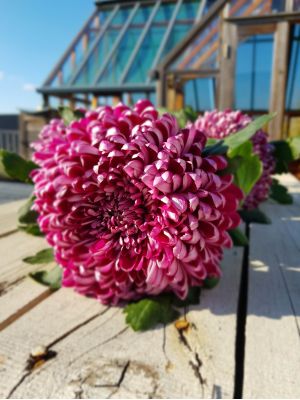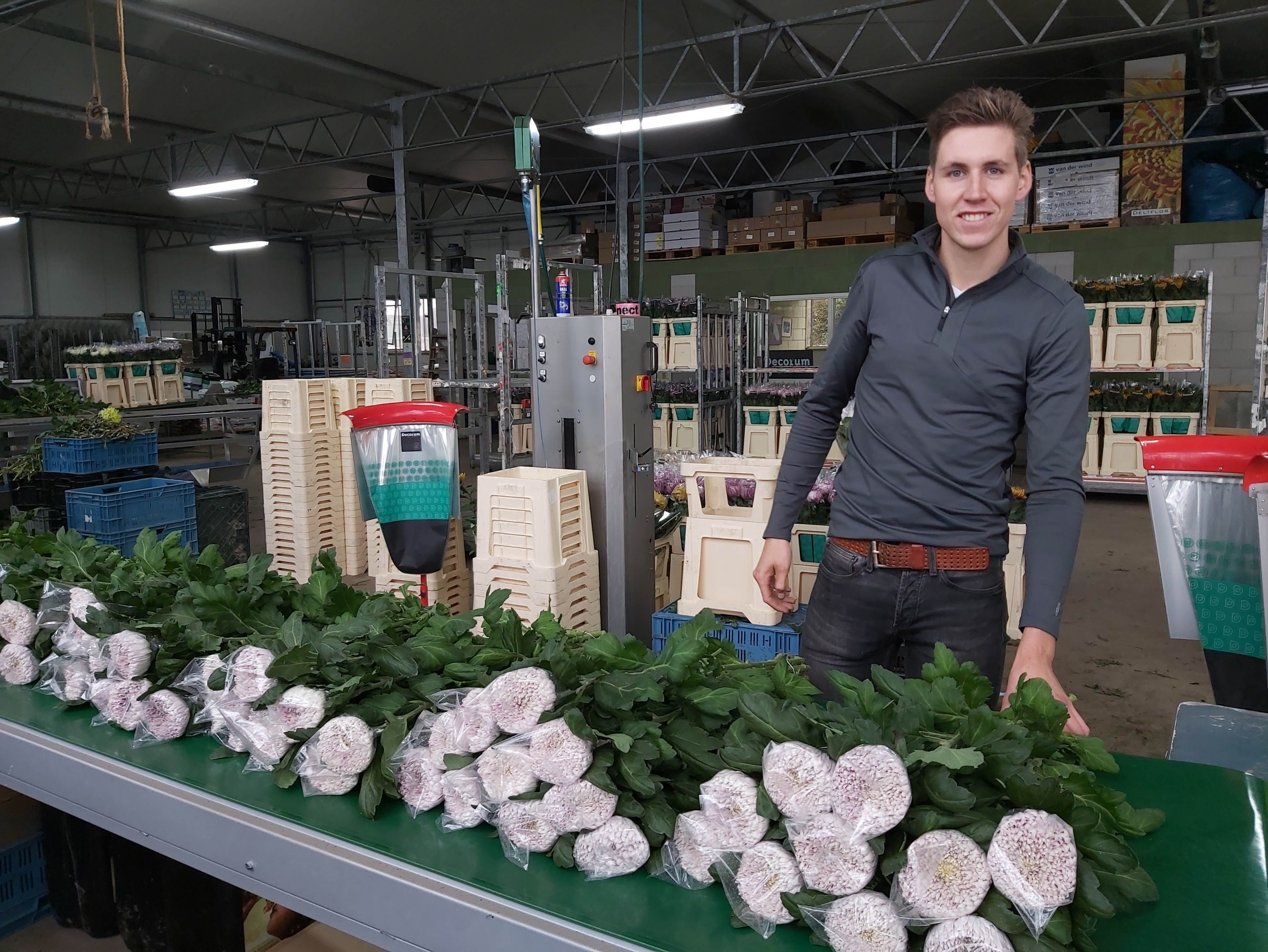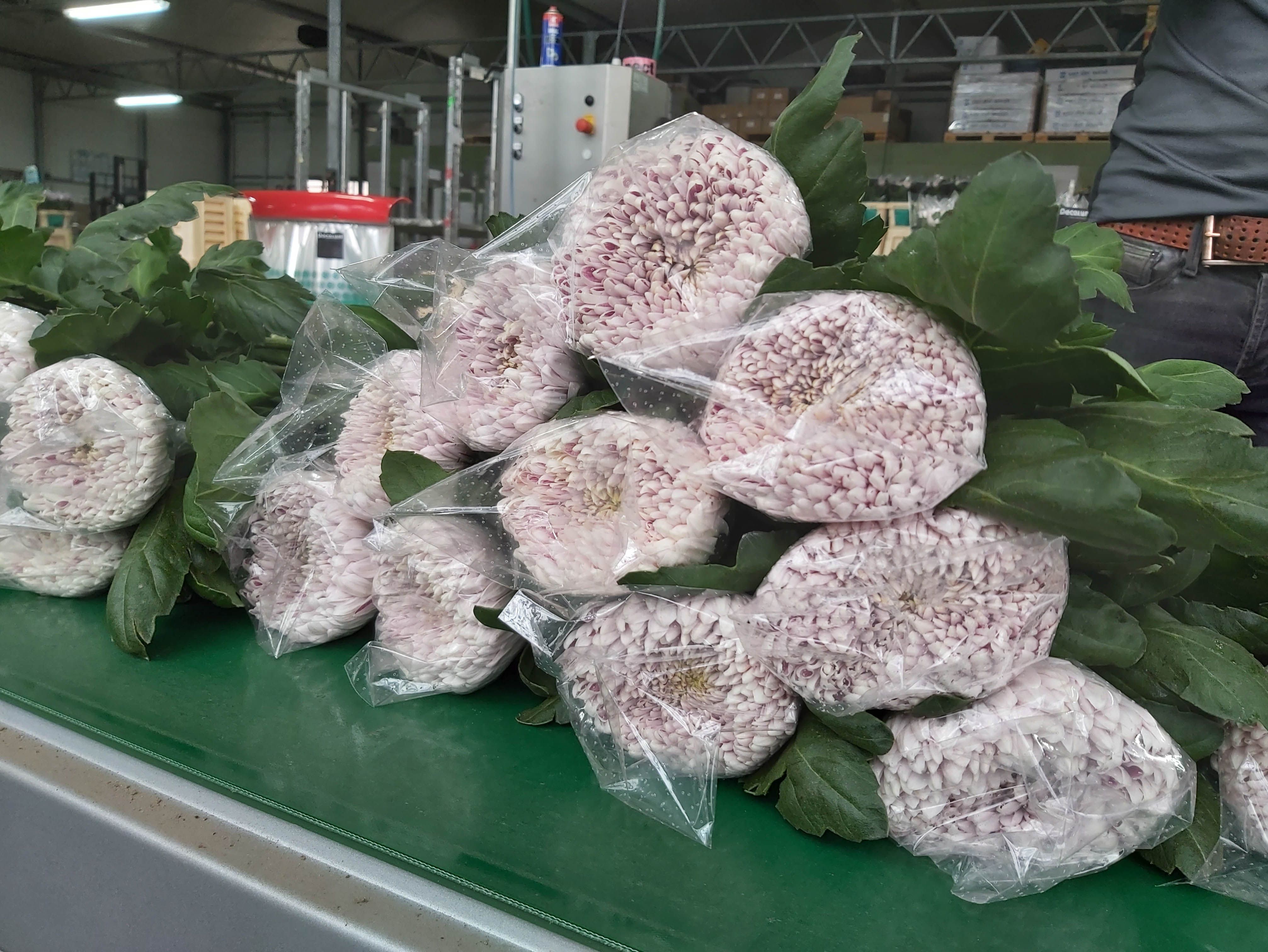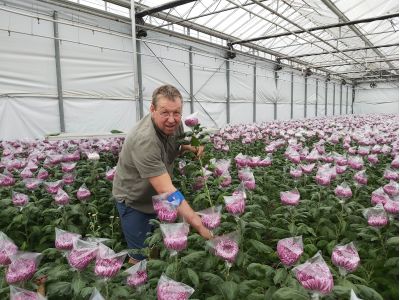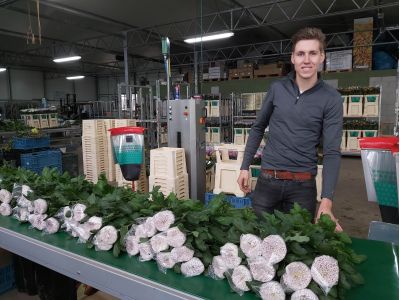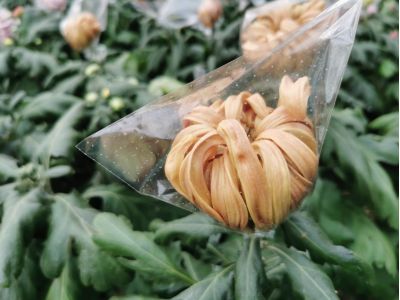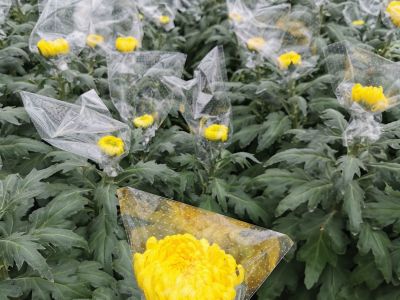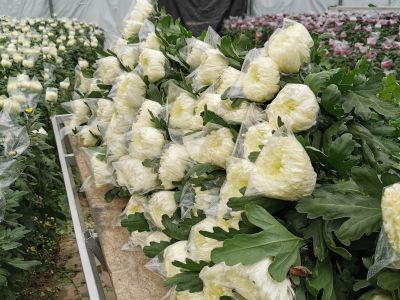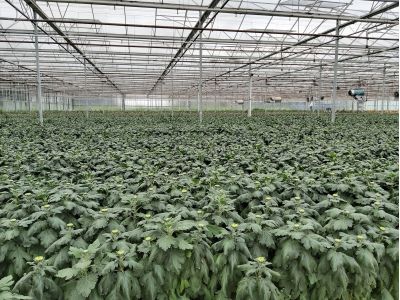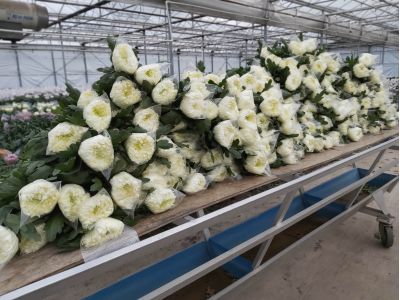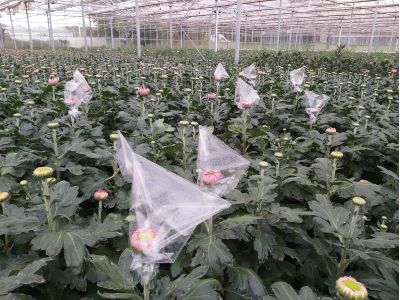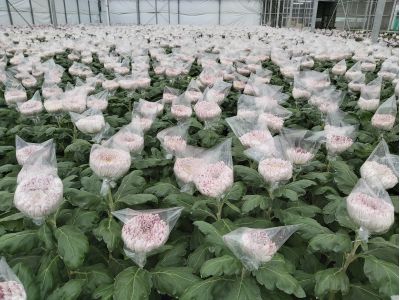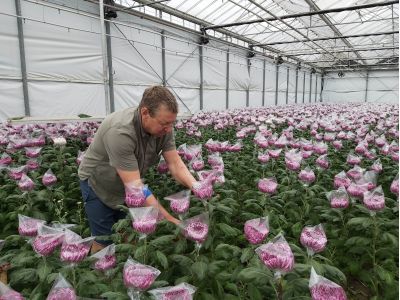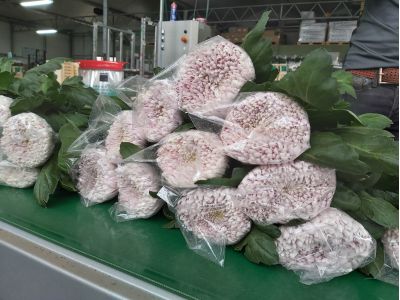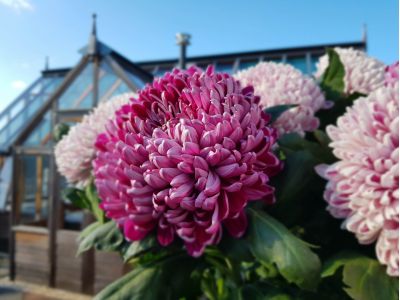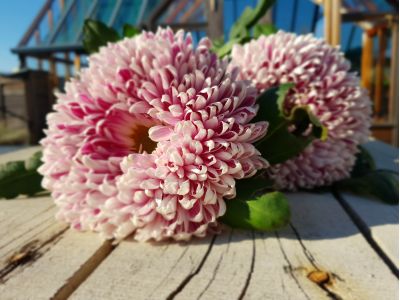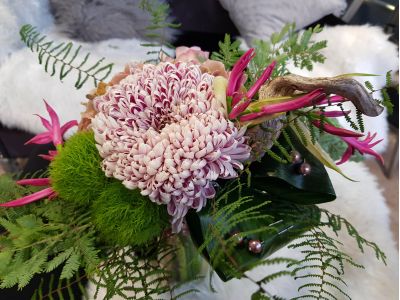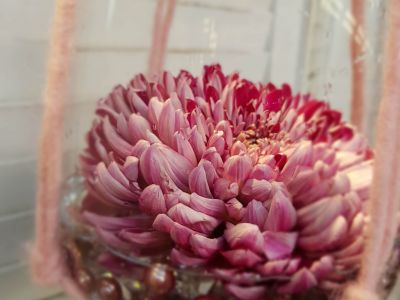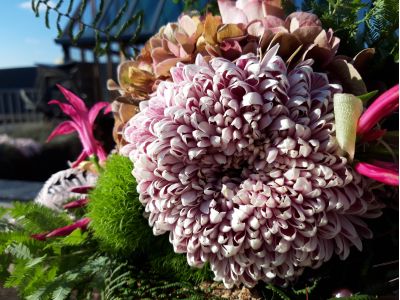Chrysanthemum Gilbert Leigh
In the spotlights
As we all know, chrysanthemums are characteristic for this time of year. Nowadays there are a few varieties are available all year round, but fortunately most of them and in particular the special varieties are still seasonal! So we went to visit grower André Knoppert & Son, because we knew they have been growing different types of disbudded chrysanthemums for more than 30 years. We received a warm welcome from André and his son Martijn, who passionately told us about the disbudded chrysanthemum and in particular about the Gilbert Leigh Silver and the Gilbert Leigh Purple.
Distinctive product
André started out growing peppers, but with peppers the emphasis was on producing large quantities, and that was not what André wanted to do for a living. Quality before quantity according to André; he wanted to be able to distinguish himself. So thirty years ago, he switched from bell peppers to cultivating disbudded chrysanthemums. A crop with which he could truly distinguish himself! Together with his son Martijn, who has been co-owner of the company for a number of years, they grow ranunculus in the spring and various types of disbudded chrysanthemums in all colors in the autumn. Different varieties, the right color for every customer and with a high, distinctive quality. The cultivation is very labor-intensive, but the challenge and the appreciation for the quality is very satisfying.
Gilbert Leigh
Two of the showpieces in the greenhouse are the Gilbert Leigh Silver and the Gilbert Leigh Purple. Both varieties have beautiful large, full flowers and a good vase life. But they mainly distinguish themselves by their beautiful colors.
Where in autumn the emphasis is on the color yellow, orange and red, the deep purple and silver Gilbert Leigh's are a beautiful addition to the color palette of the autumn. Both chrysanthemum varieties are not only very gratifying for florists to use in bouquets or arrangements, but it is also a wonderful product for the consumer to fill a vase with. In addition to the ornamental value, it is not entirely unimportant to André that both varieties can be grown very well and are appreciated by the trade.
All Saints Day
November 1 is All Saints Day. On this day we think of all we have lost, we visit the cemetery and we reflect on all our beautiful memories. Chrysanthemums are a very popular product on this day. "Chryso" is the Greek word for "gold" and "anthemom" means flower. The flower was already grown in China before the beginning of our era, where it was considered a sacred flower. Because the flower is incredibly strong and is now available in many colors and shapes, this flower is still a very popular flower in the cemetery.
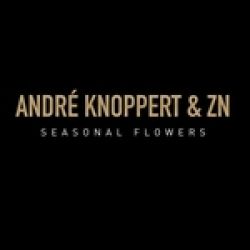
Cultivation
André has been in this business for 30 years, but every day is different. “After 30 years you would think you know the cultivation. But no, it is absolutely not like that. Each variety has its own specific problems, each crop is a challenge and so I am faced with surprises every day! It is very hard work, eight days a week,” he says with a smile, “but if the appreciation is high and we get a good price, that makes up for it.”
Steam, fluff and harvest
When the last ranunculus have been harvested, the soil is first thoroughly steamed. André explains that this is very important to grow good quality chrysanthemums. After steaming, the soil is fertilized, after which the first cuttings can be planted.
After about seven weeks the crop can be disbudded. The side shoots are removed, so that one beautiful main flower remains. André says that each variety has its own needs and that also applies to fluffing. One type produces a lot of fluff and the other less. One type is easy to walk through and the other takes a lot of time.
As soon as the bud of the flower is big enough, they are provided with a plastic bag with small holes, so that the flowers do not suffer moisture damage. The bud continues to grow in the bag, but is now well protected against damage during transport.
The chrysanthemum can be harvested approximately three to four weeks after placing the bag. There are companies that harvest a bed in one day. André and Martijn take a week to empty a bed. Every day they walk through the crop and the eye of the master looks at each flower individually. Martijn feels whether the flower is full enough. Only the thickest and heaviest are removed.
Cold greenhouse
Most chrysanthemums need about eight weeks before they can be cut. André and Martijn's disbudded chrysanthemums grow in a cold greenhouse. This means that the chrysanthemums need at least sixteen to seventeen weeks to be able to grow from cuttings until they can be harvested. The calm and natural growth contributes to the quality of the product.
Only in the autumn, when it really gets colder, André has to turn up the heat just a little, especially at night. Not so much to promote growth, but mostly to maintain the color. A white chrysanthemum gets a pink/red glow when it gets too cold at night and that is of course not the intention.
Grocery
Chrysanthemums are not only auctioned for their height, but also for their weight. When Martijn is making bunches in the shed, he weighs them every now and then to see if they are the correct weight. Everything in the company is done by hand. Planting, harvesting, bunching and putting them in sleeves. Martijn says, laughing: "There’s different types of companies, large modern factories where mass is the main thing. We are the grocery store; quality and service are the most important!”
Biological control
Four years ago André and Martijn switched completely to biological control, creating a new challenge for themselves. Due to the change in the weather, among other things, they also have to deal with new threats. “When at last you have trips, aphids and caterpillars under control with your biological control, new bugs turn up in your crop,” says André laughing. "Well, it’s how you keep learning every time you face new challenges, which is what (usually) makes this profession so much fun."
FloraPodium, 22 October 2020






